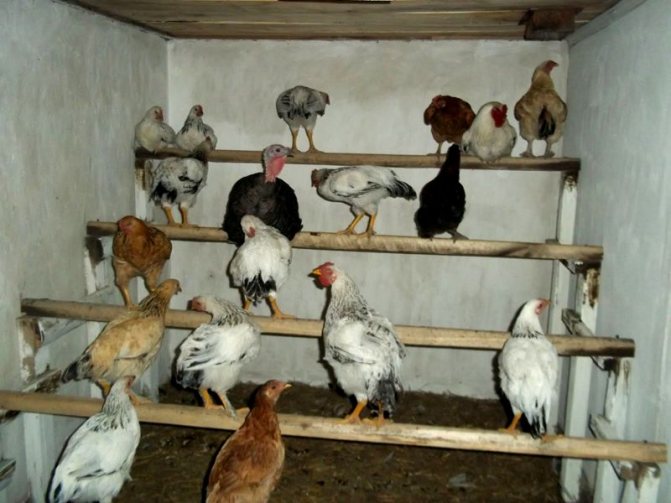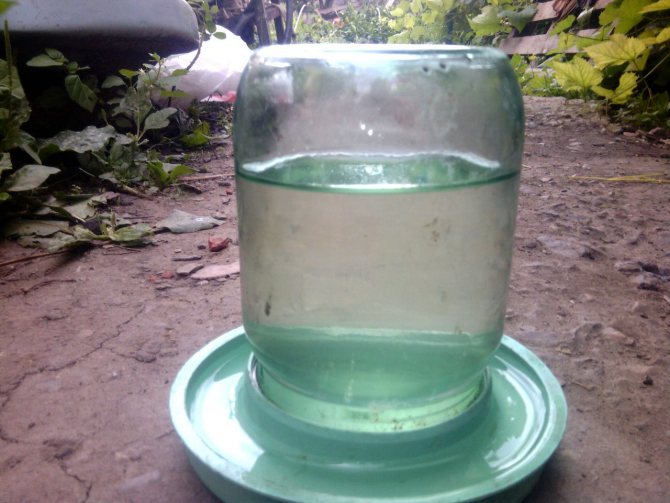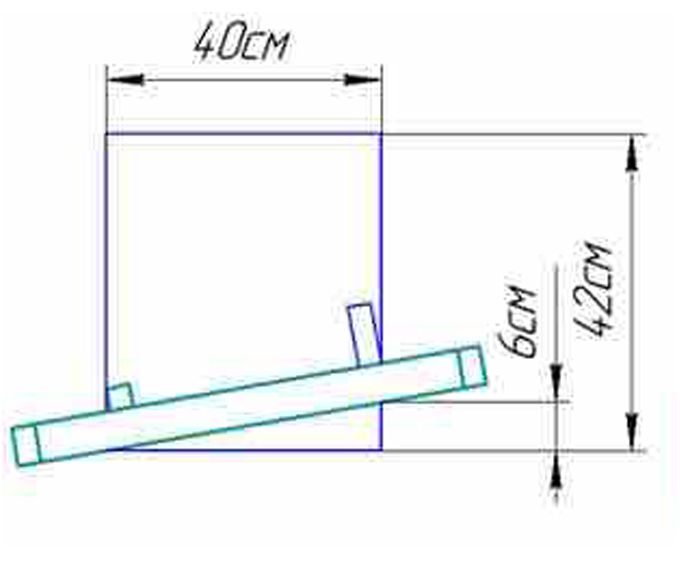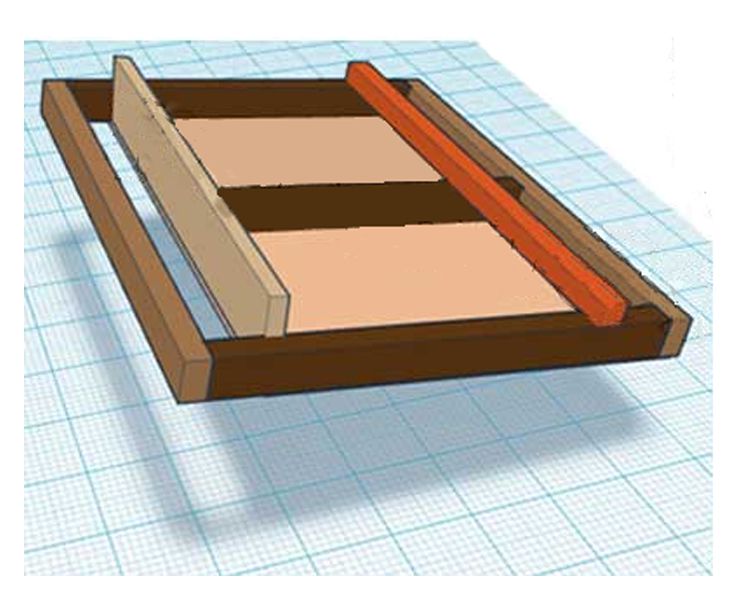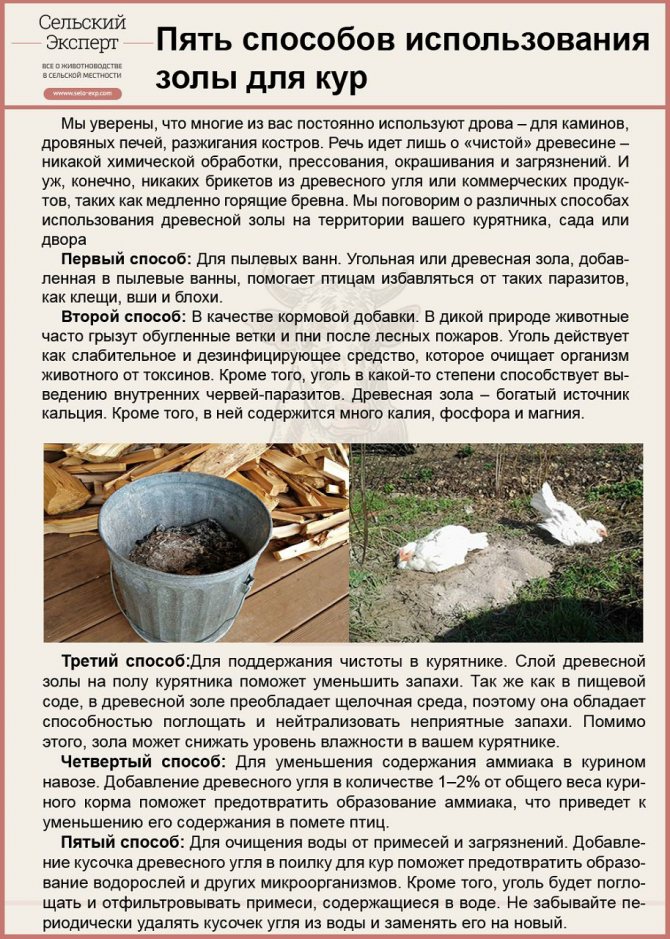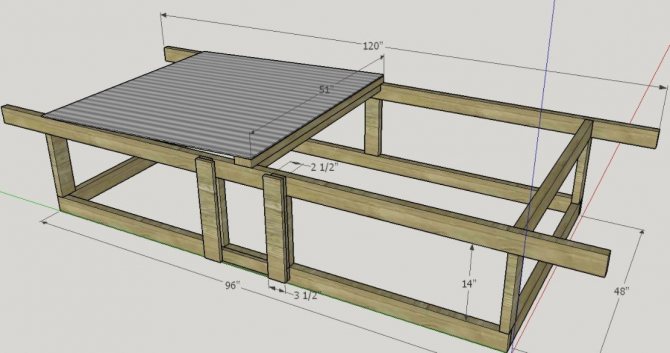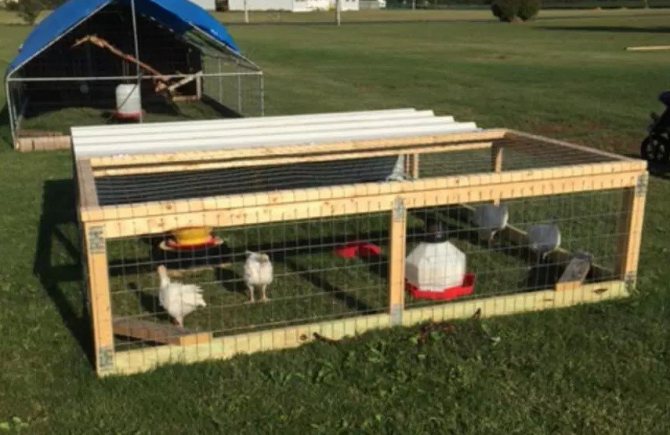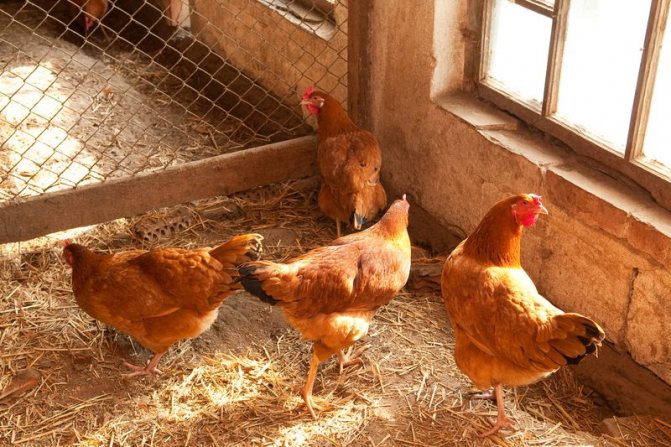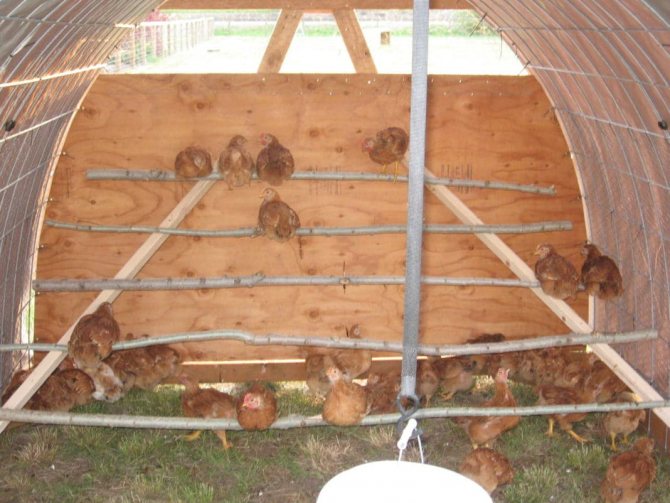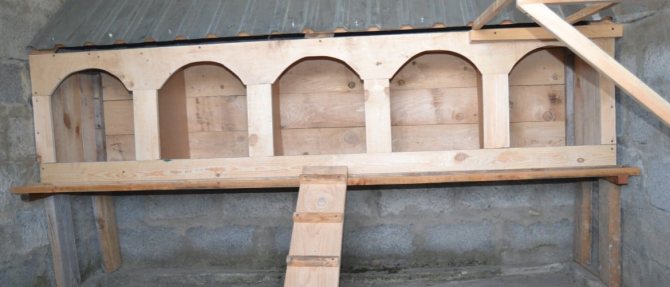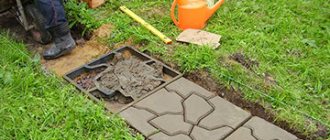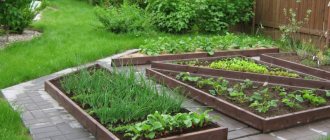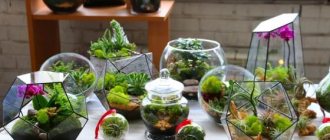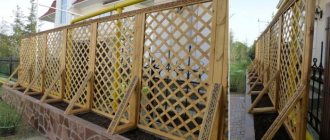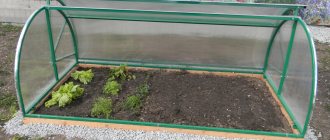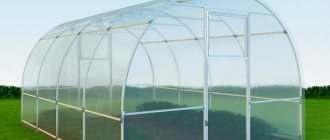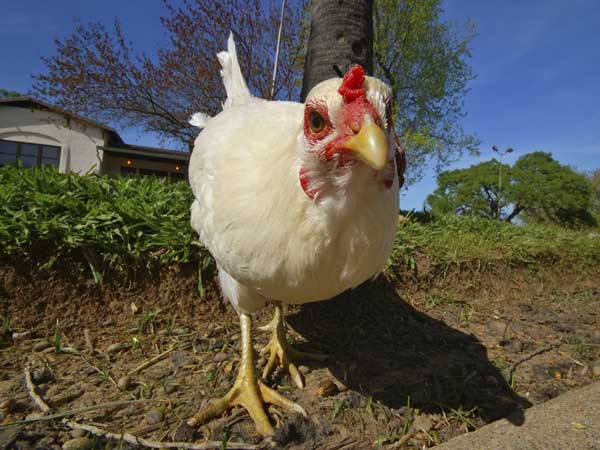
Correctly organized arrangement of the chicken coop will create optimal conditions for the living of chickens. Automates their service. This will keep the productivity of the birds at the proper level. And, if necessary, breed and raise healthy offspring. There are several options. You can build a solid poultry house from scratch. Or convert an existing barn into it. The next steps are to set up the indoor climate. And the functional placement of poultry items. Details in the article.
Classification of chicken coops
Varieties
Before deciding how to equip a chicken coop inside for layers or broilers, you need to build one. For this you need to prepare.
Various types of poultry houses are used to effectively raise chickens. Depending on the design features, chicken coops are classified according to the material of manufacture and the type of bird keeping. And also in terms of roominess.
For example, a small wooden structure with a compact arrangement of nests, perches and other things is suitable for 10 chickens.
And already 20 chickens need a larger building, made of brick or foam block. Preferably on a foundation.
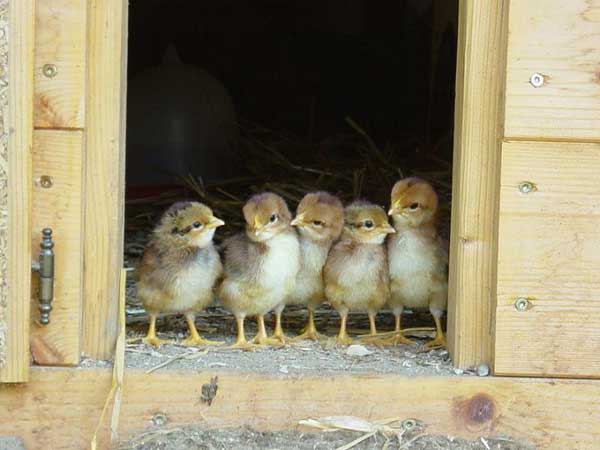

Construction type
The chicken coop can have an open and closed design type.
An open chicken coop provides for the construction of a comfortable house for chickens with free access for a walk.
Closed structures imply the arrangement of a complex consisting of a mini house and a small aviary. It is possible to keep birds in cages.
In private farmsteads, chicken coops are most often built for laying hens and open-type meat hens. A warm room is used to set up a poultry house. Here the bird feels comfortable in the cold.
If there is a lack of space, a closed house will do. A good option for 10 chickens. And broilers in general can be kept in a small area in cage batteries.
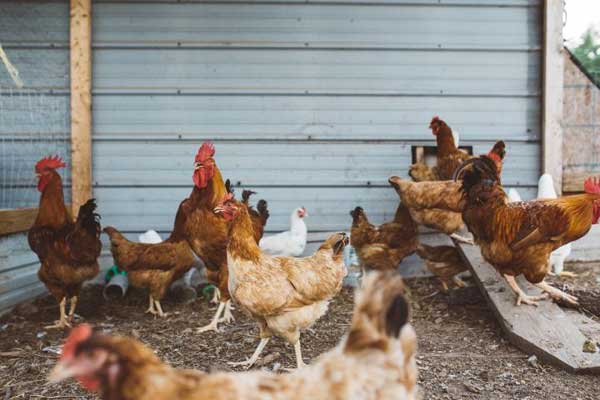

Seasonality
Seasonality of cultivation is also important. For year-round keeping of birds, a capital chicken coop with high-quality ventilation and lighting will be required.
The construction of a winter building is not economically justified if it is planned to keep birds only in the summer. An excellent option would be a lightweight collapsible design, which is removed at the end of the season.
Now let's look at the main tricks in the construction and arrangement of a chicken coop.
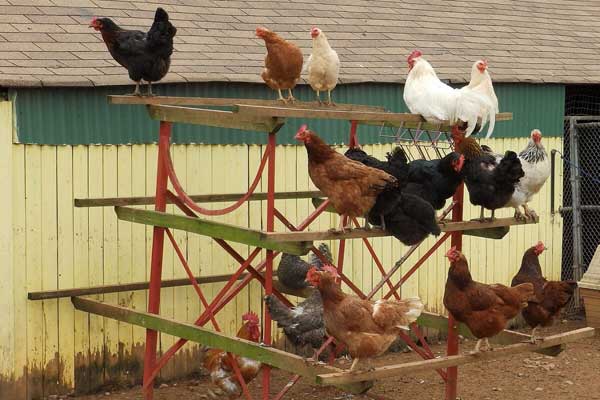

Are there any differences in the design of houses for 30 or a hundred or more layers?
Such poultry houses differ exclusively in size. If at least 1 square meter of area is required to keep 6-7 birds, then 100 individuals will need at least 16 square meters.
A properly built and equipped chicken pen has many advantages. It provides free range of birds. Thanks to this, the birds are able to grow and develop normally. Fresh air and good nutrition help increase egg production and protect chickens from disease.
Important stages of preparation
What affects the size of the building
It is important to determine the number of chickens planned for permanent residence.
The dimensions of the chicken coop are chosen taking into account the standard indicators. For outdoor keeping - no more than 2-3 heads per 1 m². Hence:
- for 10 chickens, the minimum size of the poultry house is 2 by 2 m (but it is better to do it with a margin);
- for 20 chickens - 2 by 5 m.
When keeping birds in cages, a smaller room will be required.
About walking
To prevent the birds from flying away, the walking area requires a mesh fence with a height of at least 2 m. To protect chickens from attacks by predators, the walking area is covered with a net on top. Or they equip a full-fledged roof.
The size of the walk depends on the free land area. The basic rule for its arrangement is the free movement of chickens without a crush.
Ideally, an area of 8-10 m2 is allocated for 10 chickens.
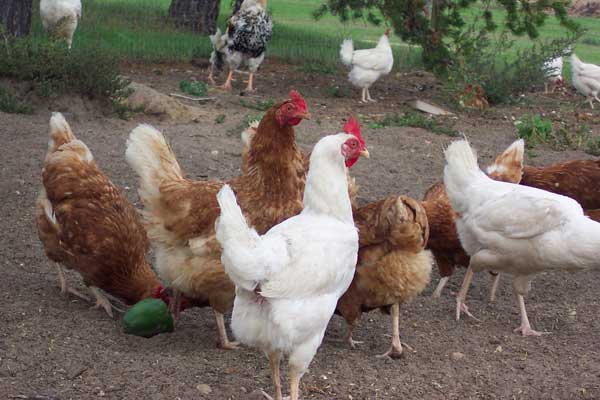

For 20 chickens - 20-25 m2.
Broilers require less space. And a fence up to 1.8 m.
Find out more in the article "Building a pen for chickens with your own hands."
Preliminary plan
Having decided on the type of chicken coop, they begin to draw up a detailed plan. They make a drawing where they indicate the dimensions of the future building.
When planning, carefully consider the internal placement of the feeders and drinkers. They shouldn't make cleaning difficult.
It is better to place roosts for chickens away from the door.
Laying hens' nests - in the warmest corner, away from drafts.
The number of nests and the size of the perches depend on the number of birds during the busy period.
Places for windows, doors, ventilation, lighting, heating devices must be indicated on the plan. And also a platform for a walking yard.
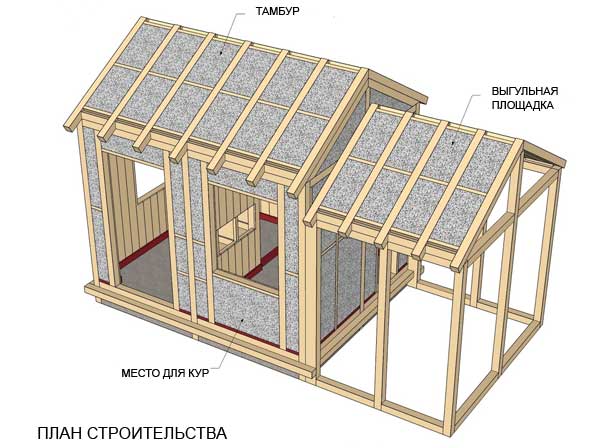

Comfortable spot
It doesn't matter if a chicken coop is planned for 10 chickens or more. In any case, you need to choose a suitable place.
Choose a site away from busy roads and people. This will avoid the anxiety and worry of the chickens
For construction, you will need a flat place, free of debris and excess vegetation. A slight slope facilitates natural drainage, without installing storm drains.
Better to avoid pits and lowlands. During the period of heavy rains and spring floods, flooding of the chicken coop is inevitable. In addition, a complex landscape requires preliminary leveling of the ground or pouring a foundation of complex shapes.
Important nuances
It is better to bring the windows of the hen house to the east side. Chickens wake up early. And with such an arrangement of windows, you can save on lighting.
To avoid the attack of weasels, foxes and rats, you will need a deep foundation under the chicken coop and walking area.
Equipping tight doors is also a necessary security measure.
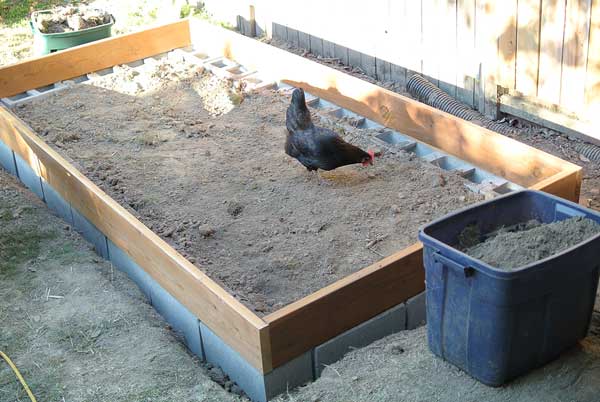

Varieties of corrals
Such structures can be of different types. However, they all fall into 2 main categories - mobile and stationary.
Mobile
Such pens are relevant in warm seasons, as they provide walking birds on fresh grass. The designs are lightweight and compact. A net or canopy covers them from above. Thanks to this, birds do not fly over low walls.
There are portable designs that have protruding handles on the sides, or more convenient mobile options on wheels.
These pens can be easily moved on a level surface.
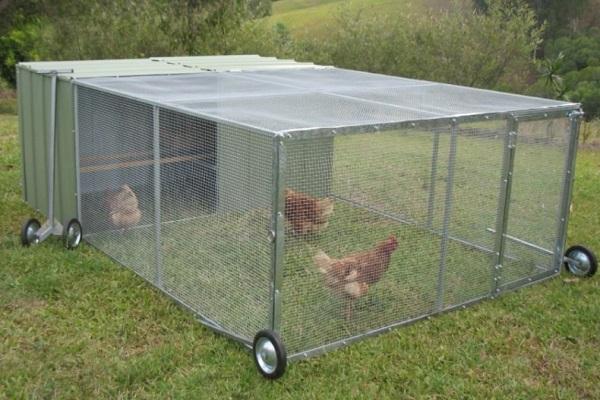

Stationary
Such pens are used all year round. They are placed close to the walls of the house. Thanks to this, the birds can go out on their own. When breeding beef breeds that cannot fly high, the pen can be open. In this case, the fence is made no more than 1.5 meters high.
For other breeds, the height is increased to 2 meters. In this case, it is better to make the corral closed by pulling the net on top. The need for a closed top arises at the risk of an attack by birds of prey, which are quite capable of dragging not only chicks, but also adults.
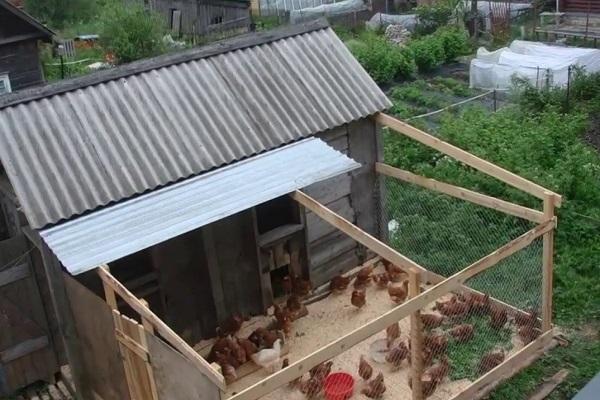

What you need to consider during construction
Wall material
The chicken coop requires periodic disinfection of the walls and floor. Therefore, it is necessary to carefully select the material for the walls.
Previously, only the material common in the area was used for ancillary facilities.
There is no such problem today. You can build a chicken coop with your own hands from any convenient material.
For the manufacture of capital buildings, you can use wood, brick, foam blocks. A chicken coop for year-round growing of chickens needs a foundation and high-quality wall insulation.
Wooden chicken coops are popular. They are easy to maintain, warm in winter and cool in summer. However, chicken droppings will erode wood surfaces over time. To protect it from moisture and mold, wood requires periodic treatment with antiseptic agents.
A light summer-type chicken coop can be built from plywood, edged boards, chipboard, OSB boards, polycarbonate.
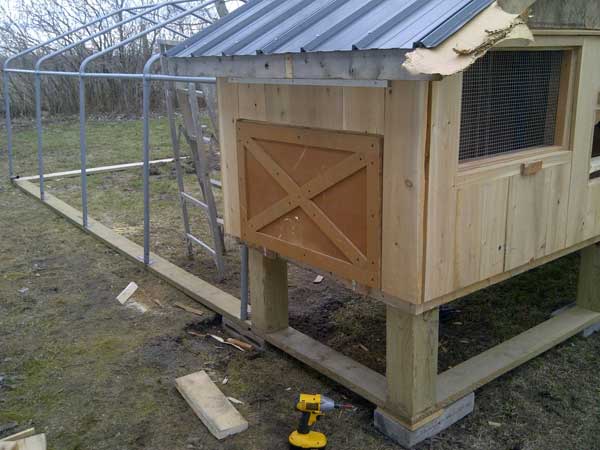

How to make the floor
With a year-round keeping of chickens in a hen house, you will need to lay a warm floor. For this, several options are used: jellied, clay, earthen, wooden.
A wooden floor is the most suitable. It is warm and easy to clean and disinfect. In addition, the service life of a wooden floor is longer than that of analogs made of clay or earth.
The concrete floor is strong and durable. But it is cold and requires thorough insulation.
Details in the article "What is better to make floors in a chicken coop".
Summer keeping of birds is also possible on mesh floors. They make cleaning the room much easier. They exclude contact of birds with droppings and the development of many diseases.
Arrangement of a manhole
When planning a chicken coop, it is necessary to think over a convenient manhole for chickens, allowing them to move freely from the walking area to the chicken coop.
The manhole is placed at a height of no more than 10 cm from the floor level. Average sizes - not less than 40 x 40 cm.
The manhole is covered with a thick door that protects the room from the cold in winter. And at night - from predators.
Additional wall insulation
Thin load-bearing walls of a capital chicken coop require insulation and finishing. For this, the installation of the frame is carried out and the insulation is laid. The top can be sheathed with any decorative material.
Foam plastic, mineral wool and even sawdust are used as insulating materials.
For interior wall decoration, plywood, board or other material that is at hand is suitable.
Windows and doors also require high-quality insulation. Elimination of drafts and cracks will help keep the heat inside the room for a long time.
Find out how to properly keep warm in the article "How you can insulate a chicken coop for the winter with your own hands."
Now let's figure out how to equip a chicken shed according to all the rules.
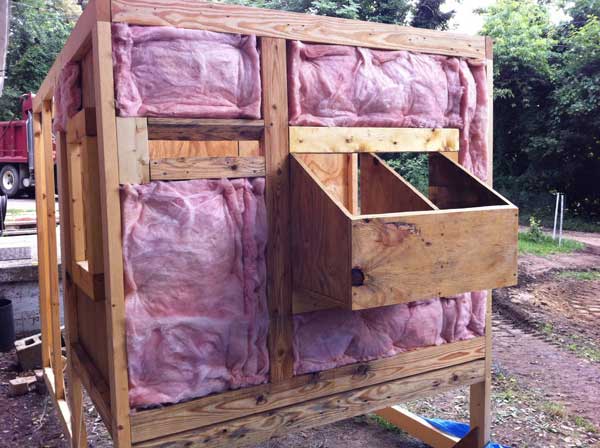

Lattice
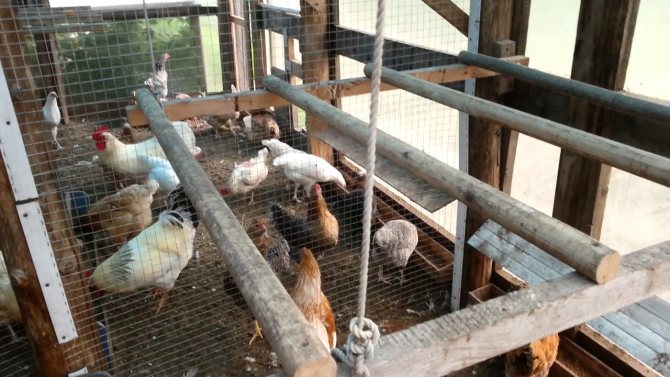

Before starting the construction of such a perch, you need to think in advance about how they will look and make a number of planning drawings.
In these developments, it is necessary to indicate the dimensions of the bird house and the size of the future perch. This will make it possible to make the upcoming work more planned and accurate.
This will help the farmers save a lot of time cleaning the coop and also help keep the middle tidy. All you need to do is remove the pallet as chicken droppings accumulate in it. In order to independently make such a roost, you must adhere to the following action plan:
- Make a preliminary construction drawing.
- Make a frame out of planks.
- Squares need to be cut out of plywood and sewn into this frame.
- The grille is installed on the hinges.
- We put the frame vertically and attach two boards on the short side. On the upper part, we prepare grooves into which the timber will enter.
- The timber, which was previously sanded, is installed in the grooves.
- The roost is ready.
At night, the grate is lowered, and during the day it is raised.
Re-equipment of a barn for a chicken coop
There is an easy and quick way to have chickens at home. This is a re-equipment of an already built barn into a chicken coop.
The winter version requires careful insulation from the inside. A small room can be insulated from the outside. This will help preserve usable floor space.
Before insulating the walls, it is necessary to thoroughly clean the entire wooden surface from rotten chips. Caulk seams and crevices.
The shed is insulated and sheathed according to the frame type.
If there is no window in the barn, you can do without it. However, such a room requires lighting from the early morning. 300-500 W incandescent lamps with aluminum reflectors can be used.
If there is no floor in the barn, a thick layer of sand should be poured. And put hay, sawdust or dry leaves on top.
The ceiling is insulated from the outside, simply by pouring a layer of earth. Or use foam.
Details in the article "On keeping chickens in a barn."
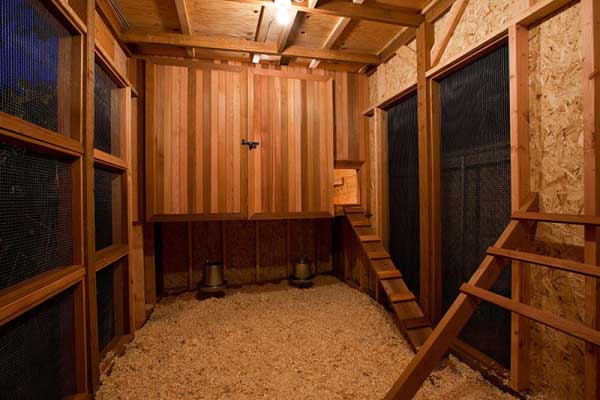

Portable
It is very convenient to make portable perches, especially in situations where the chicken coop is characterized by small areas. It can be made in the form of a box or a table.
If you prefer the box-like type, then you will need a little less time to make it, since it is simpler. You only need four planks of fifteen centimeters, mesh and plywood sheet. The action plan will be as follows:
- The box is made of boards, sewn up with plywood from below.
- Above the mesh is applied.
- Supports are made on the side in the form of boards, they are needed for perches.
- In conclusion, holes are made, where perches are attached directly.
This design is loved by all species of birds. Especially if there are no roughness or splinters on the poles. Such perches are small in size. They can be moved. For example, it is very convenient during disinfection of the premises or with a small repair of the chicken coop.
We create the necessary conditions
Heating
In winter, for the normal functioning of the chickens, it will be necessary to properly equip the chicken coop with a heating system.
Can be used:
- electric heaters;
- gas heating;
- steam heating;
- IR lamps;
- air convection oven;
- stove heating.
Heating automation makes it easier to control the temperature in the chicken coop. The sensors detect a critical level and the heating turns on. When the specified temperatures are reached, the system turns off automatically.
You can do without heating the room. But then egg production and weight gain of chickens will decrease. Freezing of eggs, development of colds, frostbite of paws and scallops is possible. And even death.
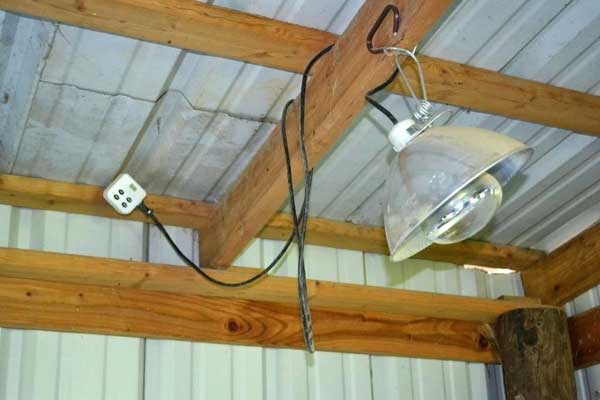

Lighting
Equipment for a chicken coop for winter raising chickens requires lighting for 12-14 hours.
Birds do not need bright light. Weak, diffused lighting will suffice. Fluorescent or infrared lamps are suitable here.
The artificial lighting mode can be automated. For this, a photosensor is arranged. He responds quickly to any changes. And adjusts the lighting level.
With the onset of darkness, the sensor turns on the diffused light. And turns it off on a timer.
Ventilation
When arranging a chicken coop inside with your own hands, you can make ventilation. The system will optimize temperature and humidity. And also relieve the room of an unpleasant odor.
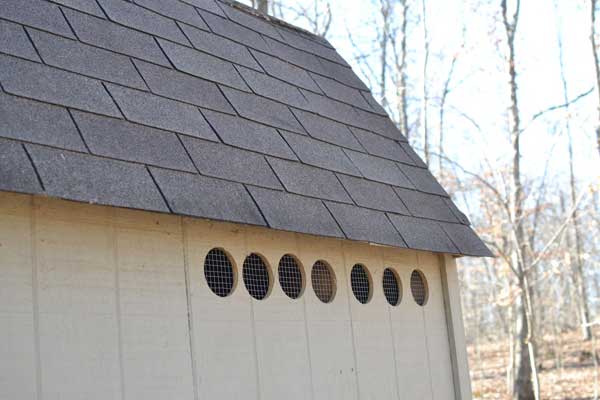

The best option is to install an exhaust system assembled from small diameter ventilation pipes.
If this is not possible, you will have to periodically ventilate the room through the door or vents on the windows.
The article "How to make ventilation in a chicken coop correctly" describes in detail all the technological nuances.
Water supply
The arrangement of the chicken coop is impossible without water supply. It is recommended to mount a serious structure only when keeping a large livestock. For 20 chickens, a can of 40-60 liters is enough. It can be filled with a hose connected to the household water supply.
Actual automatic drinker. The essence of the system is the dosed supply of water to the drinkers from a large storage tank. So the bird is provided with constant access to water in the required volumes.
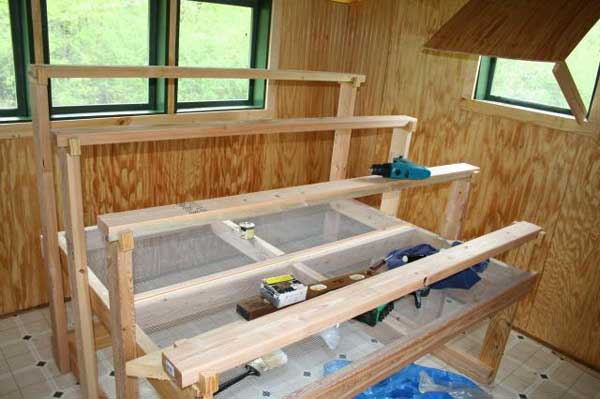

With pallet
Many farmers use standard plastic pallet perches.In fact, this structure is somewhat similar to the construction of simple poles, however, the very pallet is located at the bottom of the structure.
It is worth noting that the droppings do not need to be thrown away. It is used as a fertilizer in the garden and is even sold.
To make such a roost, you need to perform a number of actions:
- First of all, bars are placed at a distance of ninety centimeters from the floor, which will serve as supports.
- Then, using a plane and sandpaper, the wood should be processed so that the chickens are not injured.
- Next, step back thirty centimeters from the wall and nail a few beams to the base.
- On the sides we attach the blocks, the height of which is forty centimeters, then fix the pallet.
- Any metal or plastic container can be used as a pallet. Wood should not be used, it absorbs all substances well, it is difficult to wash it.
- Finally, a ladder is made using wood and leaned against the main perch.
Removable trays make it easier to clean up chicken coops and use the droppings for agricultural purposes. You can make them yourself, there is nothing complicated about it. The basis of any pallet is a plank frame. The length of the pallet depends on the total width of the perch: for a simple single-tier - 60-70 cm, for a multi-row or multi-tier - 70-120 cm.
You can learn how to build a chicken coop out of pallets here.
Internal "interior"
Perches
Comfortable perches guarantee a restful sleep of chickens. They can be made from wood. Perches made of thin bars are inconvenient to use. And under the weight of birds they can break.
The roosts are made from round sticks of medium diameter so that the chickens sit comfortably on them.
One individual needs 30 cm. This does not mean that 20 chickens will need a perch 6 m long. You can install multi-tiered structures. Or several pieces in the corners. Chickens will choose where they like to sleep best.
Do not place perches too close to the floor. In winter, it pulls from there cold.
If you fix a metal sheet under the perches or put a piece of chipboard of a suitable size, you get a tray for collecting droppings.
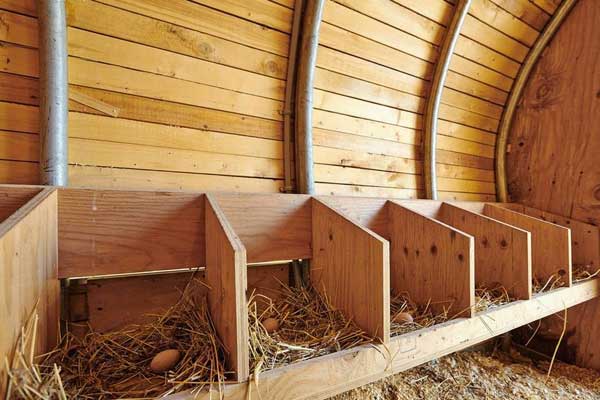

Nests
When arranging a hen house for layers, you need comfortable nests. 3-4 chickens are enough for ten chickens.
Do-it-yourself nests for laying hens are economical and durable. They are made from board or plywood. But ordinary boxes covered with straw will do.
Providing the nest with a through-hole and placing a tray underneath will make it easier to collect the eggs. Protects them from droppings and pecking by chickens.
Positioning the nests too high is irrational, it makes it difficult to collect eggs.
Litter
In the cold season, chickens are kept on a deep litter. Any loose material will do: straw, dry foliage, sawdust, shavings.
First, a thin layer of lime is poured onto the floor. And only then - a litter with a height of about 20 cm. It perfectly insulates the cold floor. Reduces the time to take care of the bird.
The top layer of litter is periodically renewed. Completely change only in spring. Or before buying a new batch of chickens.
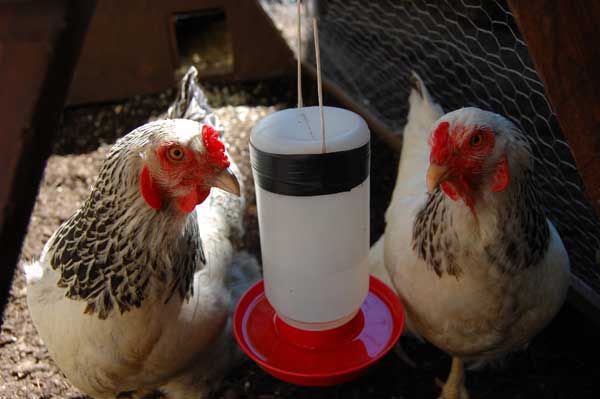

Feeders with drinkers
It is convenient to feed chickens with a spacious bunker-type feeder. Birds easily get food from it, without scattering it on the sides or trampling it with their paws. The result: feed savings. And the coop is dry and clean.
Constant access to clean water is indispensable for the normal functioning of chickens. For drinking use wooden or plastic utensils. Thin plastic drinkers break easily and can damage the birds' larynx.
A nipple watering system for a chicken coop is ideal. It can be easily disassembled for cleaning and disinfection.
Other options are described in the article "Types of feeders and drinkers for chickens."
Ash
It is mixed with sand, poured into a box and placed on the floor. Bathing in ash, chickens get rid of annoying ticks or fleas.
By settling on a wooden surface, ash contributes to partial disinfection of the room.Helps get rid of pungent odors.
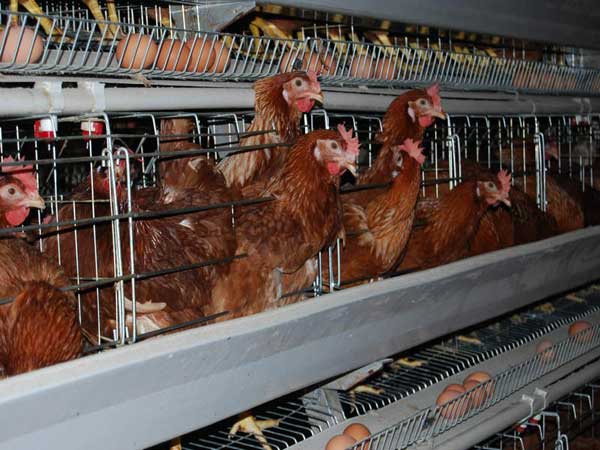

Cells
Cellular content is used in small chicken coops. When there is very little space for walking chickens. Place the cells in two rows, carefully fixing one above the other.
The cages make it easier to care for the bird. They allow you to identify any disease in time. They keep young animals from attacks of adults.
For keeping chickens, ready-made versions of cages are used. Or they are made independently from a board and a metal mesh.
Output
Equipping a chicken coop in a suburban area is quite simple and inexpensive. A new building is being built for the chickens. Or they use an old barn equipped for a poultry house.
Convenient roosts and nests, access to fresh water and food, periodic walks and heating of the chicken coop in winter contribute to the successful breeding of chickens even in Moscow.
Where do you keep the chickens? Please tell us in the comments what tricks you use when building or refurbishing a chicken coop. This will help novice poultry growers avoid mistakes.
We will be grateful to everyone for reposting the article and rating it with 5 stars.
How to make a pen for chickens with your own hands?
It is quite possible to make an aviary yourself. Moreover, there are several options for the manufacture of such structures.
Construction of a portable pen
To build a mobile pen, you should do the following:
- Make a side wall from 3 boards measuring 24.38 centimeters and 3 boards measuring 16.26 centimeters. The second wall is made according to the same principle.
- Trim the ends of short boards. At the top it is worth making an angle of 60 degrees, at the bottom - 40.
- Stretch the mesh and fix it with a stapler.
- Connect the side walls in the shape of a house and secure from above with self-tapping screws. From below, they are fixed on 2 crossbars. Cut the ends at an angle of 30 degrees.
- Attach spacers in the center of the frame with a pitch of 3.37 centimeters. Cut their ends at an angle of 30 degrees.
- Sheathe the top with plywood.
- Cover the ends with a mesh and fill in wooden planks on top.
See also
What to do if chickens peck each other to the blood, causes and treatment of cannibalismRead


Construction of a stationary open run from a chain-link mesh
To do this, you should do the following:
- Mark out the corner posts.
- Determine the location of the gate. Its width should be 80-100 centimeters.
- Make marks between the corner posts at a distance of 2 meters. They are required for intermediate posts.
- Use a hand drill to make a pit 50 centimeters deep along the markings. In diameter, they should be slightly larger than the size of the pipes.
- Cut the pipes to the required length and immerse them in the recesses. Pour stones and sand and pour concrete. Leave for 3 days.
- From the outside, weld metal hooks to the pipes.
- Nail a 50x50 mm wooden block to the wall of the shed or fix the wire with self-tapping screws.
- Fix the edge of the net with nails or knitting wire. Then pull it between the posts.
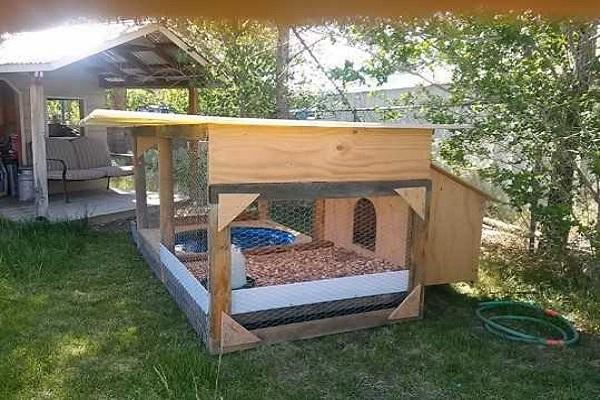

How to make a permanent indoor paddock
For the construction of such a structure, the following is performed:
- Make a markup for mounting the corner support beams. Intermediate racks are installed at intervals of 2 meters.
- Dig a groove 1 meter in size and 36-41 centimeters in diameter in accordance with the markings.
- Cut 8 pieces of 2.8 meters from pipes and 2 pieces of 80 centimeters in size.
- Place in prepared recesses, cover with stones and sand, then pour concrete. Leave on for 3 days.
- To make the frame more durable, attach a 2x4 cm profile to the wall.
- Make a canopy. To do this, weld the upper belt from a pipe measuring 4.2x4.3 centimeters. The lower belt is made from a pipe 4.2x2.4 centimeters.
- Install the mesh on the frame and secure it with knitting wire.
- Make hinges in the doorway pillar. They are fixed by welding. Then attach the wicket and mark the fixing areas.
- Hang the gate, fasten the upper hinge fragments.
- Attach the latch to the other post.
After completing the construction of the enclosure, it is worthwhile to start arranging the space inside the fence. For this, they put ladders, supports for nests, and poles.
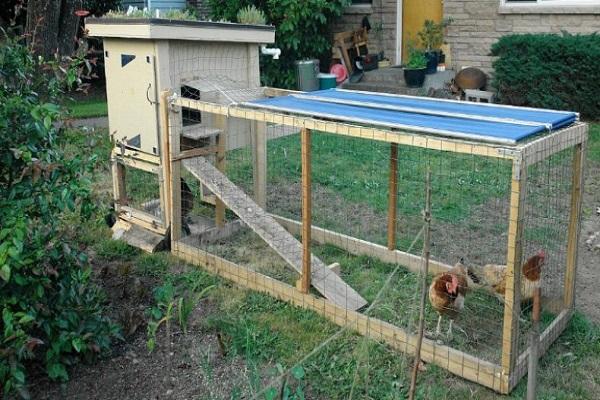

Choosing a place for an aviary
It is important to initially position the stationary corral correctly. Chickens should get into it from the hen house immediately. It is best to place it on the south side of the chicken coop and close the northern part from cold winds. It is recommended to make the wall facing north solid and use materials such as corrugated board, slate, etc.
Learn how to make a chicken enclosure.
When both the chicken coop and the corral are being made at the same time, then the place for them should be chosen away from the road. You can save a lot of space by choosing the high support hen house option. It is also not necessary to build a canopy, since poultry will hide under the chicken coop from rainfall and sunlight.
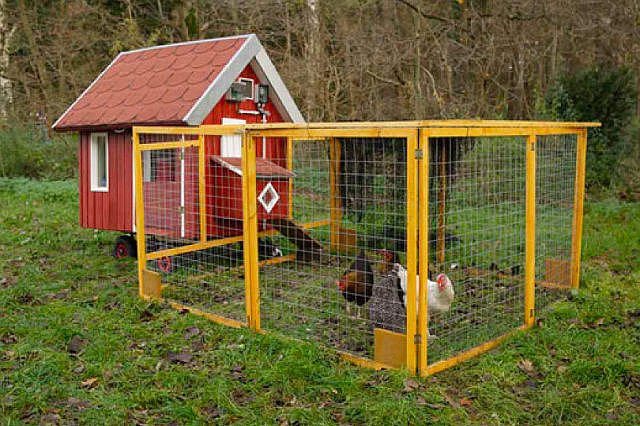

You should not have a stationary chicken coop with an aviary in the lowlands. In such places, water accumulates, and high humidity negatively affects the chicken coop itself and the health of its inhabitants. The chicken coop window should face the sunniest (southern) side and nothing should shade it.
Learn how to make a roost, nest, feeders, drinkers.
Why did the chickens walk?
Continuous indoor exposure negatively affects the health and productivity of poultry. Some chicken breeds can be kept without a range, provided that the poultry house is equipped with a forced-air ventilation system. Broilers are usually grown in cages - they gain weight faster when they do not move much. However, hens and meat and egg breeds need to be outdoors.
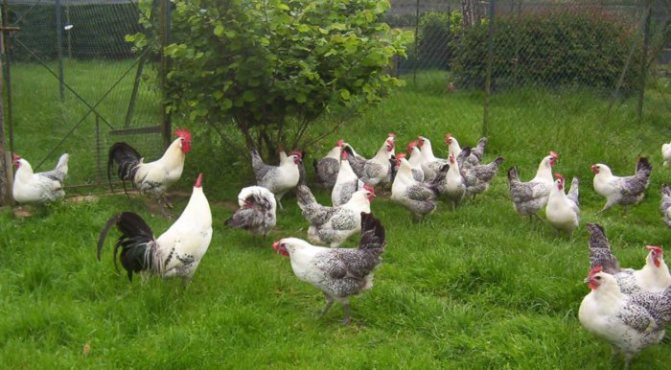

Walking chickens
Why walking is useful for chickens:
- on the street, birds collect worms and beetles, this is a protein supplement to the main diet;
- being in the fresh air speeds up metabolism and strengthens the immune system;
- ultraviolet light, which chickens receive while walking, serves to prevent rickets;
- physical activity prevents obesity - due to excess weight, egg production decreases and the quality of meat deteriorates.

